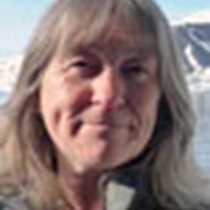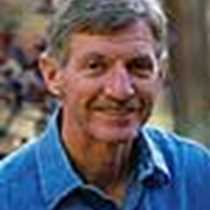Early this morning we sailed away from the mainland and headed off to the Isle of Mull. At Craignure we boarded our bus to make our way across the island on a winding single-track road to Fionnphort, at the south-western tip of Mull. The interior of the island presented an evocative landscape of lochs, moors and hills whose slopes disappeared into the looming mists. The shoreline, however, was dotted with white-painted cottages, cottage gardens, herds of Highland cattle grazing contentedly amongst the bracken, and a great flurry of activity at the village annual show.
At Fionnphort we joined the local ferry for the short crossing to Iona. It doesn’t take long to become captivated by this tiny island, with its historic buildings sprinkled among the delightful cottages and crofts. It was in this significant place that St Columba founded his great Celtic monastery around 563 A.D., which grew into a major teaching, cultural, spiritual and artistic center, under the shadow of many beautiful carved stone high crosses. A famous royal burial ground was established, and here countless chiefs, kings and notables were buried under sculptured slabs. The religious house of Iona survived even the attentions of the pagan Vikings in the ninth and tenth centuries A.D., and from 1200 A.D. it saw renewed life as the spiritual heart of the Lordship of the Isles.
We wandered by the 13th century nunnery, once a small house of Augustinian canonesses, past the ornately carved MacLean’s Cross to St Oran's Chapel, the oldest of the standing medieval buildings, and then to the abbey itself, constructed for a new Benedictine community in the years just after 1200 A.D. The buildings fell into ruins after the Reformation of 1560, but are now beautifully restored. At the nearby St Columba Hotel we were served a fine lunch featuring ingredients from their own organic garden. There was time before our return ferry ride for a visit to the abbey museum, where amidst the sounds of chanting and atmospheric lighting, we were transported back to the Celtic world of St Columba’s monks.
Back on Mull our next stop was at Duart Castle, standing on a dramatic rock overlooking the southern entrance to the Sound of Mull. Since the 14th century this stronghold was the seat of the Clan Maclean, the dominant clan in the area. It had fallen into ruin until it was acquired in 1910 by Sir Fitzroy Maclean who then rebuilt it as a living castle. His descendent, Sir Lachlan Maclean, still lives there today.
Then it was onwards, past the 19th-century Torosay Castle to Tobermory, the main town of the island with its many brightly colored houses and pubs strung around the harbor, and our berth for the night.









